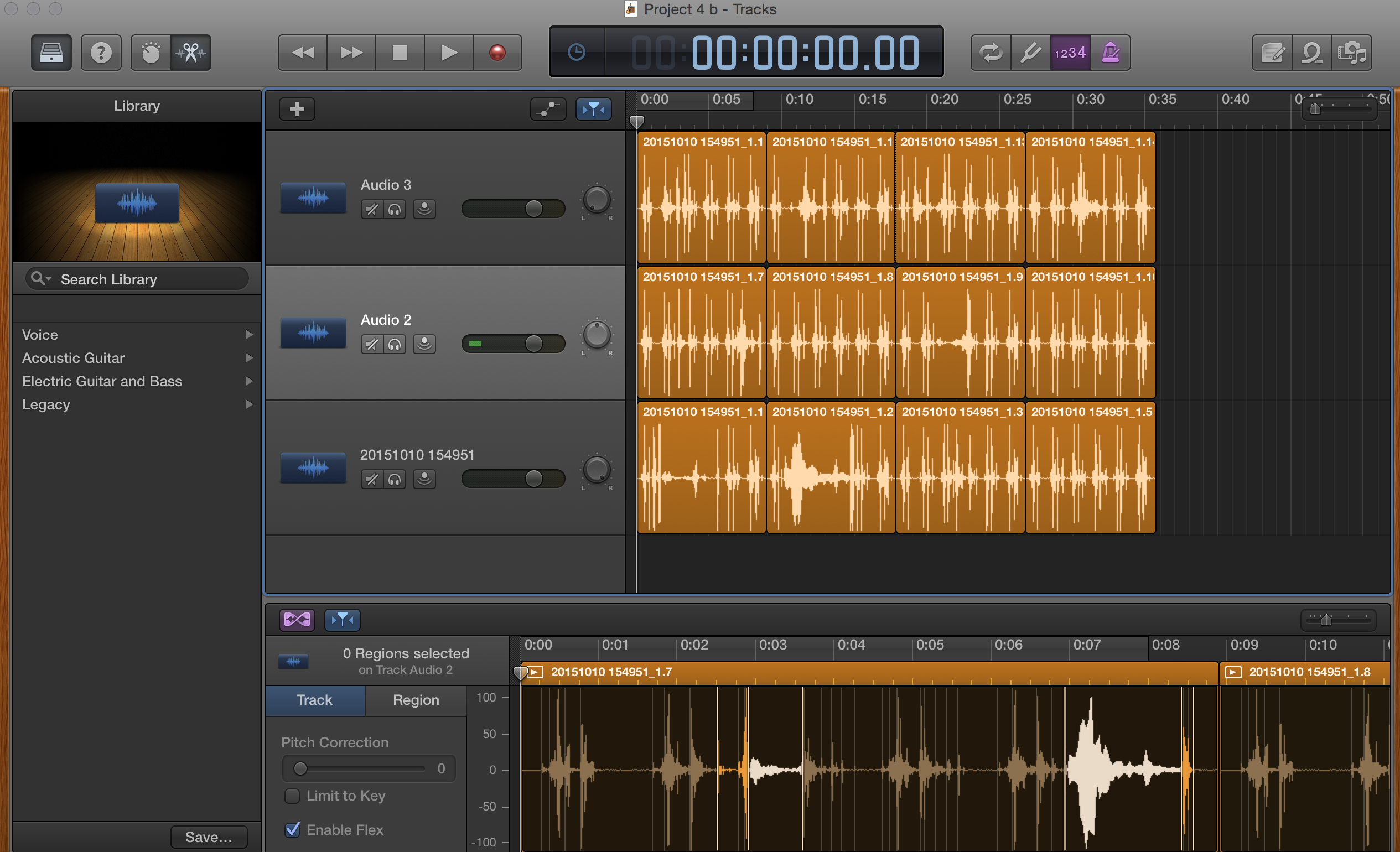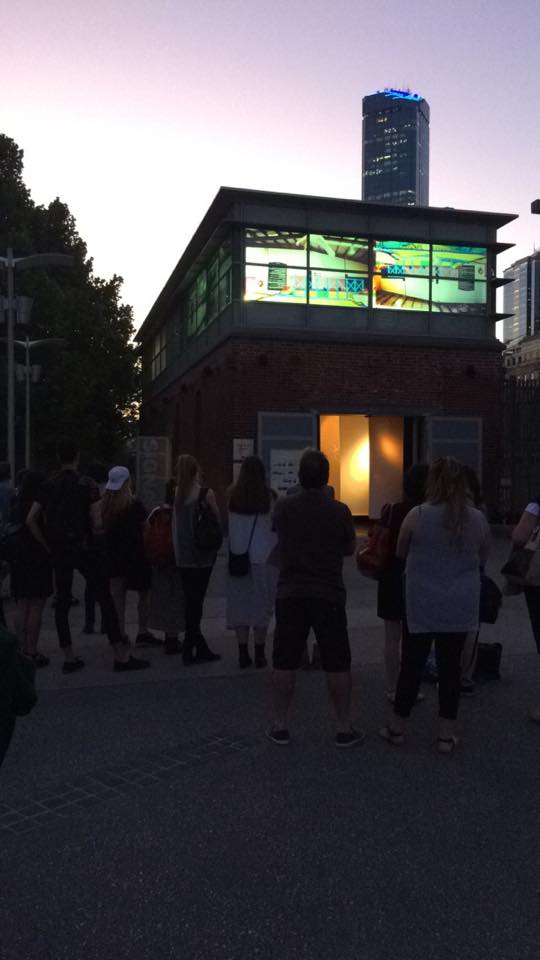The final project brief for specific to site was exhibited at ‘Signal’. This creative arts studio aimed to provide a space for young artists of all mediums. With the assistance of classmates, our tutor, and the employees at Signal we were able to put on an exhibition for 3 nights in the heart of the city on the Yarra. Our team worked hard and cooperatively in particular groups to prepare, promote and run the show. The different groups included the tech team, the installation team, PR, project managers and the documentation team. I was a member of the public relations team, and through being appointed this job I had a variety of responsibilities to ensure the success of the promotion of the exhibition. One of my main tasks consisted of constructing and the distributing of visual promotions. These included assisting in the construction of the website, placing of posters, and cutting and dispersing of the flyers.
Our team had a group conversation via the social media platform, Facebook, to keep in contact to keep on top of activities and to brainstorm and collaborate ideas. It was here we voted on placing posters in spaces in which are often densely populated and thus would have a higher chance of being identified. This included the library, building 80, the student lounge, RMIT connect, and the media and communications building 9. (See blog post here). However, when I asked the librarian’s permission to put up the posters, they declined kindly and informed me that we are supposed to seek permission from RUSU on where to dispense posters. After speaking with RUSU, we had permission to place posters in RMIT connect, the pillars of building 8 and we had to seek permission from individual buildings for the other places, and therefore we also placed them in building 9. Another job of mine was working with Rose on developing the website, providing potential viewers the opportunity with a link to each individual student’s Media Factory blog, blurbs for their work and a portrait of themselves. (See website here).
Overall, this semester has been far greater than semester 1, the ‘Specific to Site’ studio has taught me a lot on methods of exhibiting, editing skills and collaboration. I enjoyed being able to work and produce all forms of mediums for media, such as photography, audio and film. As the semester progressed I have a made a lot of new friends, as well learnt a lot of valuable skills such as editing for film. We were provided workshops on particular programs such as Premiere Pro, and that plus the help of classmates and my tutor I was able to learn a completely new program and work with arranging multiple footage on one screen, cropping, sizing and edits of reversing and slow-motion. The signal exhibition, the backpack projection night and Project Brief 3 for Testing Grounds really extended my skills on collaboration and allowed myself to experience working in the media industry professionally, working with real artists, and real employees of the studio art world was very valuable and a great insight to the media environment. It also allowed myself to immerse in the struggles with communication, and hardships of putting an exhibition together, especially if there is not a mutual understanding on collaboration and effort.
Furthermore, through this studio my conceptual process of creating films has expanded immensely. Robbie has expressed to me a new understanding of place, and the relevance of set, scene, and studio galleries. I was able to challenge the idea of place and non-place and match it amongst the art world. From this, I believe that any sort of space could be made into a place, depends on one’s interpretation, project brief 2 really helped me to explore this. (See blog post here). I had such a small understanding of curatoring and studios, however after being exposed to Testing Grounds and the Signal studio, I have developed a deeper understanding for galleries and exhibitions.
Moving away from conventional exhibition spaces whether it is a gallery or exhibition space, we have focused to explore more alternative spaces that would compliment our work. Although traditional exhibition spaces may offer “perfect” lighting or an ideal colour scheme, alternative spaces such as outdoors or projections from a building offer a sense of ambience or atmosphere that other spaces could simply not offer. While observing works in the outdoors, each viewer has a unique experience, while being offered the opportunity to be influenced from external factors. Making art seem fun to the public, rather than mysterious, incomprehensible and solitary, has led a growing list of artists and municipalities around the country to create open studio events (Grant, 2010). Therefore, with the influence of readings, Robbie and the Project Briefs, I have deferred from the idea of traditional projects of artwork and been exposed to more non-traditional places, redefining the “place” of artwork, and becoming more specific to the environments of production of artwork as well as the display of art.
References:
- Grant, D 2010, Selling Art Without Galleries: Towards Making a Living from Your Art, Allworth Press, United States.


